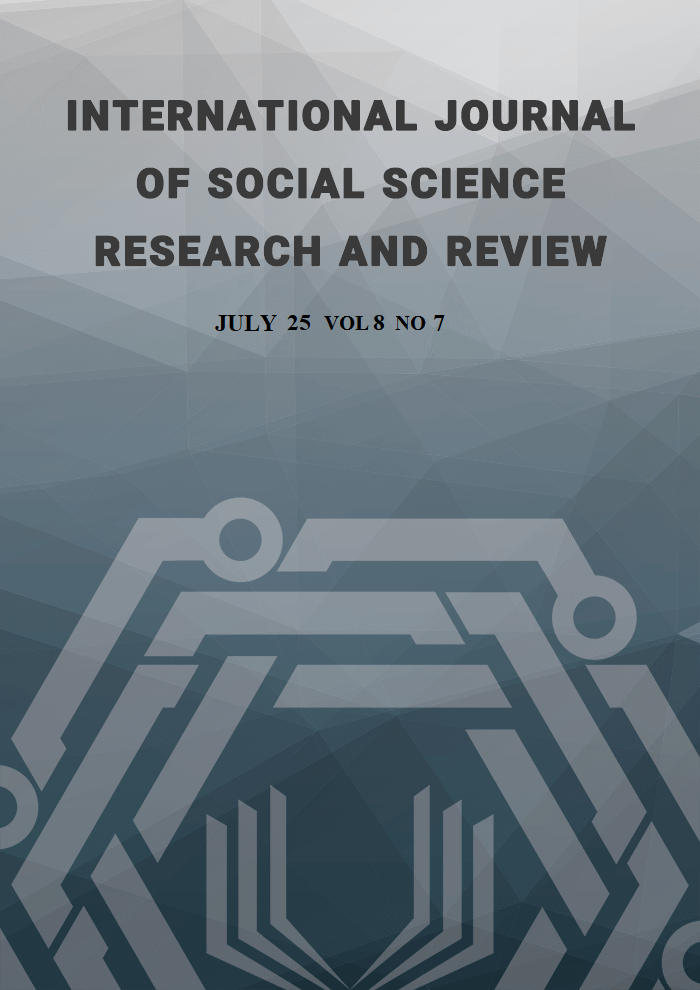Financial Literacy and Investment Decision-Making Tendencies: A Comparative Study between Millennials and Gen Z in Indonesia
Abstract
This study aims to comparatively analyze financial literacy and investment decision tendencies between Millennials and Gen Z in Indonesia. Utilizing a qualitative approach and a comparative study design, this research involved in-depth interviews with 15–20 participants from each generation, selected through purposive sampling. The findings reveal that both generations possess basic financial literacy, but their sources and depth of understanding differ. Millennials (aged 29–44) acquire financial knowledge from conventional sources such as formal education and mainstream media, resulting in a comprehensive understanding of financial concepts. Their investment motivations are centered on long-term financial stability and protection against inflation, favoring conservative instruments like mutual funds, bonds, and blue-chip stocks. For them, technology serves as a facilitator, and social environments act as confirmation sources. Their risk tolerance is measured, focusing on risk management. Gen Z (aged 13–28), on the other hand, learns from digital platforms and social media (TikTok, YouTube), with a pragmatic understanding oriented toward quick results. Their motivation lies in early financial independence and seizing fast-moving opportunities, often influenced by trends and FOMO (Fear of Missing Out). They tend to be aggressive, quick to adapt, and prefer crypto assets and meme stocks. For Gen Z, digital technology and social environments are primary sources for decision-making. This generation shows a high-risk tolerance, viewing youth as "time" to recover from potential losses.
References
Ademola, A., Kazeem, B., & Oladejo, T. M. (2024). Examining the Drivers of Savings Behavior among Women Entrepreneurs in Nigeria. Jurnal Manajemen Indonesia, 24(2), 257–269.
Adiandari, A. M., & Okvitawanli, A. (2023). Perancangan, Desain Sistem dan Isi Aplikasi Pengelolaan Keuangan Generasi Milenial. . http://repo.unr.ac.id/824/
Alkaraan, F., Elmarzouky, M., Hussainey, K., & Venkatesh, V. G. (2023). Sustainable strategic investment decision-making practices in UK companies: The influence of governance mechanisms on synergy between industry 4.0 and circular economy. Technological Forecasting and Social Change, 187, 122187. https://doi.org/10.1016/j.techfore.2022.122187
Arianti, B. F. (2018). The influence of financial literacy, financial behavior and income on investment decision. Economics and Accounting Journal, 1(1), 1–10.
Baihaqqy, M. R. I., Disman, N., Sari, M., & Ikhsan, S. (2020). The effect of financial literacy on the investment decision. Budapest International Research and Critics Institute-Journal (BIRCI-Journal), 3(4), 3073–3083.
Burhanudin, H., Putra, S. B. M., & Hidayati, S. A. (2021). PENGARUH PENGETAHUAN INVESTASI, MANFAAT INVESTASI, MOTIVASI INVESTASI, MODAL MINIMAL INVESTASI DAN RETURN INVESTASI TERHADAP MINAT INVESTASI DI PASAR MODAL ( Studi pada Mahasiswa Fakultas Ekonomi dan Bisnis Universitas Mataram ). Distribusi - Journal of Management and Business, 9(1), 15–28. https://doi.org/10.29303/distribusi.v9i1.137
Dimock, M. (2019). Defining generations: Where Millennials end and Generation Z begins. Pew Research Center, 17(1), 1–7.
Febrianti, E., & Anggarini, D. R. (2025). Analisis Perilaku Keuangan Personal, Gaya Hidup Hedonisme dan Pendapatan Dalam Pengambilan Keputusan Berinvestasi Pada Gen Z di Bandar Lampung. Jambura Economic Education Journal, 7(2), Article 2. https://doi.org/10.37479/jeej.v7i2.30966
Gumilang, R. R., Amanda, H., & Ginanjar, Y. (2023). Impact Motivasi Investasi, Literasi Keuangan, dan Perilaku Keuangan Terhadap Keputusan Investasi. http://journal.ikopin.ac.id/index.php/coopetition/article/view/3033
Hamzah, A. (2019). Literasi Keuangan Dan Inklusi Keuangan Syariah Di Kalangan Tenaga Pendidik Kabupaten Kuningan. Jurnal Akuntansi Dan Keuangan Islam, 7(2, Oktober), Article 2, Oktober. https://doi.org/10.35836/jakis.v7i2.76
Harahap, N. (2020). Penelitian kualitatif. http://repository.uinsu.ac.id/9105/1/BUKU%20METODOLOGI%20PENELITIAN%20KUALITATIF%20DR.%20NURSAPIA%20HARAHAP,%20M.HUM.pdf
Himmah, E., Supeni, R. E., & Sari, M. I. (2025). Perilaku Keuangan Generasi Z Berdasarkan Literasi Keuangan, Efikasi Diri, dan Gender. Jurnal Simki Economic, 8(2), 336–349.
Kusumastuti, A., & Khoiron, A. M. (2019). Metode penelitian kualitatif. Lembaga Pendidikan Sukarno Pressindo (LPSP). https://books.google.com/books?hl=id&lr=&id=637LEAAAQBAJ&oi=fnd&pg=PA1&dq=PENELITIAN+KUALITATIF&ots=x42gr2l6mw&sig=6A2UrP5H9aIDzea27cc6aiFIseM
Nasution, A. F. (2023). Metode penelitian kualitatif. http://repository.uinsu.ac.id/19091/1/buku%20metode%20penelitian%20kualitatif.Abdul%20Fattah.pdf
Nugraha, R. K., Eksanti, A. P., & Haloho, Y. O. (2022). The Influence Of Financial Literacy And Financial Behavior On Investment Decision. Jurnal Ilmiah Manajemen Dan Bisnis, 8(1), 68.
Rahmawati, D. Z., Wibawa, L. A., Putri, L. C. A., & Malik, A. (2025). Pengaruh Literasi Keuangan Terhadap Minat Investasi Di Pasar Modal Bagi Generasi Milenial. Al-A’mal : Jurnal Manajemen Bisnis Syariah, 2(1), Article 1.
Raut, R. K. (2020). Past behaviour, financial literacy and investment decision-making process of individual investors. International Journal of Emerging Markets, 15(6), 1243–1263. https://doi.org/10.1108/IJOEM-07-2018-0379
Shah, S. Z. A., Ahmad, M., & Mahmood, F. (2018). Heuristic biases in investment decision-making and perceived market efficiency: A survey at the Pakistan stock exchange. Qualitative Research in Financial Markets, 10(1), 85–110. https://doi.org/10.1108/QRFM-04-2017-0033
Widhiastuti, R. N., Harianti, A., Suryowati, B., & Suzuda, F. (2024). Penyuluhan Literasi Keuangan untuk Mencapai Financial Freedom Bagi Gen-Z. Swadimas: Jurnal Pengabdian Kepada Masyarakat, 2(1), 8–12.
Wimbyarto, N. P. (2024). Analisis Profil dan Pertumbuhan Investor Surat Berharga Negara Obligasi Negara Ritel (ORI) Periode 0ri001-ori015 [Thesis, Universitas Islam Indonesia]. https://dspace.uii.ac.id/handle/123456789/49778
Yanti, N. E. (2018). Analisis Risiko Investasi dan Optimalisasi Portofolio Saham LQ45 dengan Metode Value At Risk. Jurnal Ilmiah Mahasiswa FEB, 6(2), 1–15.
Copyright (c) 2025 Oulivia Nilawati, Leni Ainiah

This work is licensed under a Creative Commons Attribution-NonCommercial-NoDerivatives 4.0 International License.
Copyright for this article is retained by the author(s), with first publication rights granted to the journal. This is an open-access article distributed under the terms and conditions of the Creative Commons Attribution license (https://creativecommons.org/licenses/by-nc-nd/4.0/).





